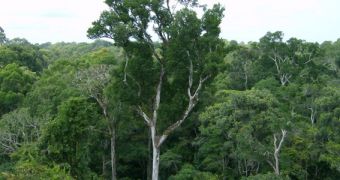A group of investigators from the NASA Jet Propulsion Laboratory (JPL) in Pasadena, California, was recently able to establish for a fact that natural forests in the Amazon Basin are capturing more carbon dioxide from the atmosphere than they are releasing. Whether or not this was actually the case has been a reason of debate in the international scientific community for many years.
The NASA-led study was carried out over a period of 7 years and covers a large swath of land. The JPL group argues that this research provides one of the most important missing pieces in understanding the carbon balance of the Amazon. Scientists figured out long ago that this cycle was far more complex than they were previously led to believe.
What this investigation establishes once and for all is that Amazonian forests indeed capture more carbon than they release, which means that they are truly contributing to reducing the severity of global warming and climate change. Details of the investigation were published in the March 18 issue of the top scientific journal Nature Communications.
Though forests are better-known for their ability to capture and store CO2, they can also release significant amounts of carbon through natural processes such as tree deaths. For this study, scientists measured CO2 emission rates in the Amazon over numerous areas, including many that had never been surveyed from ground level before.
Over the 7-year study, Amazonian forests released around 1.9 billion tons (1.7 billion metric tons) of carbon into the atmosphere yearly, the team determined. These values were established based on satellite data and measurements conducted on the ground. The JPL science group was led by investigator Fernando Espírito-Santo.
The new research was not focused on assessing the influence of human activities such as logging and deforestation on the Amazonian carbon cycle. As far as natural cycles are concerned, the overall tendency is clearly in favor of carbon absorption. The science team correlated satellite and airborne-instrument data with ground observations to arrive at this conclusion.
“It was a difficult and audacious study, and only Espírito-Santo's dedication made it possible,” explains US Forest Services (USFS) research scientist Michael Keller, who was a coauthor of the investigation.
As global warming becomes increasingly present and aggressive, researchers are accelerating their efforts to understand how various ecosystems contribute to the planetary carbon cycle. In addition to forests, other science targets include specific types of carbon-absorbing rocks and the global ocean.
Figuring out exactly how these elements interact and contribute to carbon capture and storage will allow experts to predict the future effects of global warming with more accuracy than ever before.

 14 DAY TRIAL //
14 DAY TRIAL //